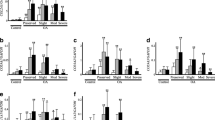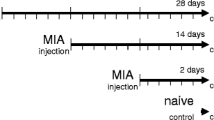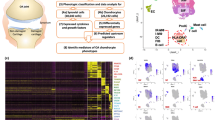Abstract.
The biochemical properties of articular cartilage rely on the biochemical composition and integrity of its extracellular matrix. This matrix consists mainly of a collagen network and the proteoglycan-rich ground substance. In osteoarthritis, ongoing cartilage matrix destruction takes place, leading to a progressive loss in joint function. Beside the degradation of molecular matrix components, destabilization of supramolecular structures such as the collagen network and changes in the expression profile of matrix molecules also take place. These processes, as well as the pattern of cellular reaction, explain the pathology of osteoarthritic cartilage degeneration. The loss of histochemical proteoglycan staining reflects the damage at the molecular level, whereas the supramolecular matrix destruction leads to fissuring and finally to the loss of the cartilage. Chondrocytes react by increasing matrix synthesis, proliferating, and changing their cellular phenotype. Gene expression mapping in situ and gene expression profiling allows characterization of the osteoarthritic cellular phenotype, a key determinant for understanding and manipulating the osteoarthritic disease process.
Similar content being viewed by others
Author information
Authors and Affiliations
Additional information
Rights and permissions
About this article
Cite this article
Aigner, T., McKenna, L. Molecular pathology and pathobiology of osteoarthritic cartilage. CMLS, Cell. Mol. Life Sci. 59, 5–18 (2002). https://doi.org/10.1007/s00018-002-8400-3
Issue Date:
DOI: https://doi.org/10.1007/s00018-002-8400-3




